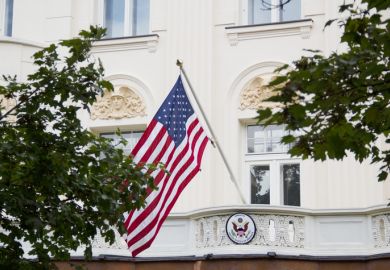Australia’s government was chided for cutting research and development spending as it presented its top science awards.
“It takes more than accolades for great science – it takes strong investment,” representative body Science and Technology Australia said in a statement as the Prime Minister’s Prizes for Science were handed out in Canberra.
The top winner was Dutch-born Kurt Lambeck, now an emeritus professor at the Australian National University, whose acclaimed career in space geodesy – precise measurement of the Earth using satellites – was honoured with the Prime Minister’s Prize.
His discoveries of the complexity of Earth’s gravitational field spawned advancements in spaceflight and global positioning systems, and boosted understanding of continental plate movements and their impacts.
Lee Berger, an adjunct researcher with James Cook University and the University of Melbourne, has also been honoured for years of research that helped expose the chytrid fungus as the culprit behind a worldwide plunge in frog populations.
Dr Berger’s research, which has earned her the Frank Fenner Prize for Life Scientist of the Year, challenged a prevailing conviction that infectious diseases could not cause mass extinctions.
Prizes were also awarded to University of Queensland chemist Jack Clegg, four Sydney optical engineers employed by the Finisar telecom corporation, Melbourne biomedical entrepreneur Geoff Rogers and teachers Brett Crawford and Scott Sleap.
The award presentation, in Canberra on 17 October, followed the release of budget tables showing that Australia’s government expects to spend A$9.6 billion (£5.2 billion) on research and development this financial year – 7.7 per cent less than in 2017-18.
Science minister Karen Andrews said R&D funding would increase in coming years thanks to a A$2.4 billion package of new investments announced in the May budget. She said the government was spending A$1.9 billion in national research infrastructure and an extra A$1.6 billion through the Medical Research Future Fund.
Science and Technology Australia president Emma Johnston said the medical research allocations were welcome, with a report this week concluding that every A$1 investment in the field delivered A$3.90 in economic benefits.
But Professor Johnston, dean of science at the University of New South Wales, said the spending plans risked being undermined by sliding investment in basic research. “We shouldn’t be putting all our eggs in one basket,” she said.
“We need visionary support for the rest of the science, technology, engineering and maths sector. Otherwise we risk losing our competitive edge and will fail to become the innovation nation to which we aspire.”
Shadow science minister Kim Carr said that while Prime Minister Scott Morrison was “spruiking” his science credentials, government research spending had reached its lowest level since the start of the decade.
“The government talks a big game on science and research, but the facts are different at a time where our international competitors are increasing investment to fuel future jobs and growth,” he said.
Register to continue
Why register?
- Registration is free and only takes a moment
- Once registered, you can read 3 articles a month
- Sign up for our newsletter
Subscribe
Or subscribe for unlimited access to:
- Unlimited access to news, views, insights & reviews
- Digital editions
- Digital access to THE’s university and college rankings analysis
Already registered or a current subscriber?








